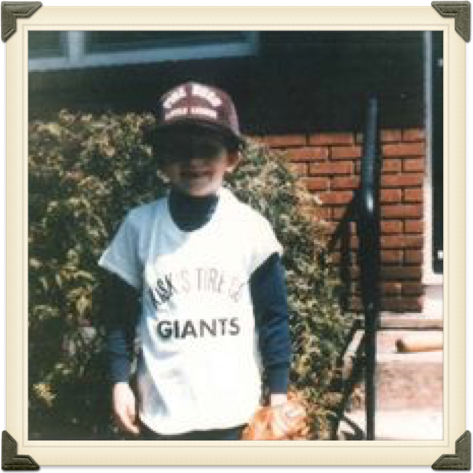Baseball in Chippewa Falls traces back to 1867
Original Publication: Chippewa Herald-Telegram, May 10, 2009, p. B1-B2
In the annals of Chippewa Falls, the year of 1867 is most often lauded as the year of Leinenkugel’s. That year, Jacob Leinenkugel and John Miller arrived in the Village of Chippewa (it would become Chippewa Falls two years later), bought a $250 parcel of land from the Union Lumbering Company, and built a brewing facility and living quarters for brewery workers and their families.
The brewery remains a city landmark, and is Chippewa Falls’ oldest industry. Although this may be the most remembered local event of the year, another Chippewa Falls mainstay was also established that year. In 1867, organized baseball came to the Village of Chippewa.
The summer of 1867 may have been almost over, but that didn’t stop a group of local baseball enthusiasts from trying to organize a ball team to represent the Village of Chippewa. Local interest in the game had been increased as ball teams started popping up all over Wisconsin, with the closest being in Sparta.
Interest was further heightened by a state tournament that had been played a few weeks prior. On Aug. 24, a small ad ran on the front page of the Chippewa Union and Times: “Those who have signified their willingness to join a Base Ball Club, will please meet at L.K. Buzzell’s office, over the Post Office, Monday next at 7 P.M.”
A large crowd grew L.K. Buzzell’s office that Monday evening. The gathering quickly grew too large for the modest space, and a move to a nearby hall was made.
With an overflowing crowd present, the first Chippewa Falls Base Ball Club held its inaugural meeting. A board of officers and directors (many of whom had helped organize the meeting and eventually finance the ball club) were appointed first. The board quickly named a newcomer by the name of Stephen Coleman as the team’s captain.
Coleman, a Civil War veteran from New York brought experience and a broad knowledge of the game.
His first task was to put together a roster of players, proclaiming that the most important quality in a ball player was the ability to run well. Not surprisingly, a great many Civil War veterans graced the first squad. In fact, there was enough interest to field a few teams. After the roster was finished, a practice schedule of Monday, Wednesday and Friday was decided upon.
Practices were to be held at a flat on the riverfront between Bay Street and Bridge Street, where the following day the officers and directors would spend hours digging up stumps, cutting down weeds, and picking up garbage to make the grounds playable.
A final piece of business was obtaining baseball equipment and supplies. Included in the order were bats, balls, score sheets and books.
The Chippewa ball team immediately took to their practice, and soon were taking to the diamond daily. It was baseball in name, but was very different than the game played today.
For starters, there were no gloves or masks. The ball was larger and delivered underhand by the pitcher. In addition, the pitcher was required to keep their arm straight, not bending at the elbow. Needless to say, the games were often high scoring affairs.
Rules of the game were made available to the masses in publications such as Haney’s Base Ball Book of Reference and Beadle’s Dime Base-ball Player. Both provided rules of the game, as well as an overall guidance for a more uniform game of baseball. Of the two, Beadle’s would have a longer shelf life, becoming the first continuous baseball instructional booklet, running from 1860-1881.
After a few weeks of practice, the squads were divided and an exhibition game was played.
With the excitement of the game still fresh, it didn’t take long before both ball players and fans alike looked for more competition. They didn’t have to look too far, as the neighboring city of Eau Claire, having caught wind of Chippewa’s ball team quickly organized one of their own — the Clear Water Boys.
As was a custom at the time, a challenge was put out to the Eau Claire squad, who had a week to respond. The Clear Water Boys didn’t need the full duration as they immediately set a date to play.
With a large fan base in tow, the Eau Claire squad traveled to Chippewa for a late September game between the Clear Water Boys and the newly named Chippewa Nationals.
There is no record of the game played beyond recollections from both sides.
Versions of the outcome vary, with Eau Claire saying that no score was kept, while Chippewa claimed victory.
An interesting side note to the game involved some attempted sabotage on the part of Eau Claire. According to a recollection by one of the team officials Thomas McBean, the Chippewa squad had included a pregame ritual of “taking a sort of liquid decoction imported principally from Kentucky, to keep off the malaria while playing on the flat.”
Eau Claire caught wind of the bourbon consumption and supposedly attempted to get the Nationals intoxicated, but it ended up backfiring as McBean recalled, “The Chippewa’s were all on their bases, and the intended hors-de-combat was plainly visable among the visitors.”
Chippewa’s first attempt at organized baseball was a success. A celebratory game, followed by a post game meal and ball was planned. Word must have spread of the base ball being played in the Village of Chippewa.
“They came from every direction, horse teams, ox teams, and afoot,” McBean said.
Taking place out by the Northern Wisconsin Center, the Chippewa squad was once again divided in two. The two sides placed a wager with the loser paying for an oyster dinner.
The game was called due to darkness after seven innings, with the final score being McBean 17, Miles 11, thus ending the first “season” of baseball in Chippewa Falls.


